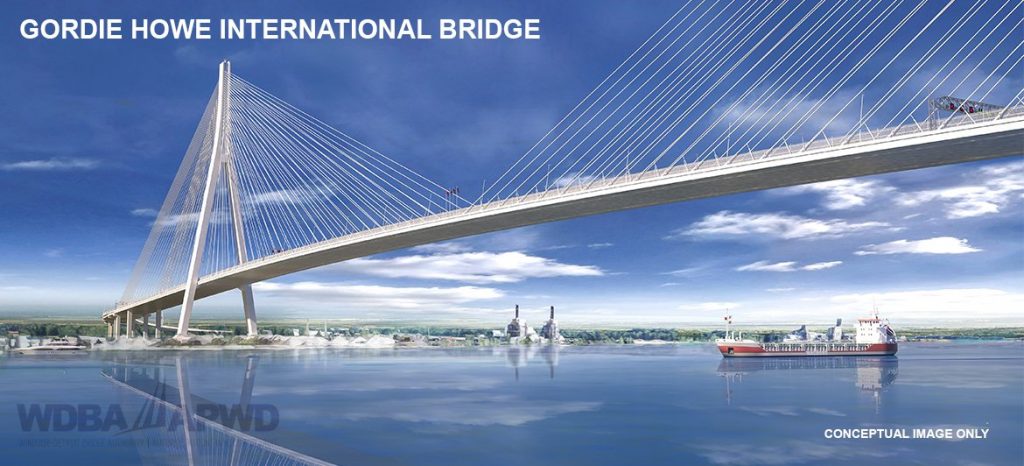Ontario’s Ministry of Transportation (MTO) says it has a highly respected inspection program for its bridges and that the bridge that collapsed in Genoa, Italy on Aug. 14 was of an archaic design not found in Ontario, so there is no major cause for concern about the integrity of the province’s bridges raised by the Italian incident.
Similarly, two engineering professors at the University of Waterloo say the collapse of the Morandi Bridge in Genoa should not sound an alarm for jurisdictions such as Ontario, but it does present an opportunity to discuss the technology Ontario uses to inspect its bridges.
At least 43 people died when a 200-metre section of the 51-year-old A10 motorway bridge collapsed during torrential rains.
“While we have fairly robust and time-tested standards for inspection of bridges on a regular basis, most of the high-profiles failures occur at the weakest link, and most likely the causes of failure have been missed during inspection because they have been difficult or impossible to inspect through visual inspection,” said Waterloo’s Sriram Narasimhan, Canada research chair in smart infrastructure and an editor for the ASCE Journal of Bridge Engineering.
“So it’s important for us to invest in technology that can detect such hidden failure mechanisms that otherwise are not possible to inspect visually or manually.”
Narasimhan’s colleague Maria Anna Polak, a University of Waterloo civil and environmental engineering professor and a fellow of the American Concrete Institute, said it is too early to say definitively but the Genoa catastrophe appears to have had several causes. There had been concrete and steel corrosion reported for years.
“It is too early to offer any definite answers on why the Morandi Bridge collapsed,” she said. “Deterioration, design, maintenance and flooding have been mentioned, but in reality, structural collapses are usually due to a combination of factors. Canadian bridges are routinely inspected; the challenge is in using the inspection data for decision-making and rational assessment of the remaining strength. Signs of distress on a structure should always be taken seriously and followed by multi-level assessment by engineering experts.”
MTO senior issues adviser Jacob Ginger noted in a statement the ministry inspects bridges at least every two years in accordance with the Public Transportation and Highway Improvement Act. Professional engineers are involved in the inspections using the Ontario Structure Inspection Manual (OSIM) and bridge inspectors are required to have taken a ministry bridge inspection course.
“The OSIM has become the effective national standard, with over half of Canadian provinces using it regularly, or using their own derivations of it,” Jacobs said.
He also noted the Morandi Bridge was a relatively early and unique design of a cable-stayed bridge. Currently, the only cable-stayed bridge in Ontario is at the Nipigon River, a structure with a more modern design.
The Gordie Howe bridge now under construction in Windsor is a federal project that will use a cable-stayed design.
Heather Grondin, a vice-president with the Windsor-Detroit Bridge Authority, said in a statement, “I cannot speak to the design of the Genoa bridge and compare it to the design of the Gordie Howe International Bridge. Safety and durability are priorities for Windsor-Detroit Bridge Authority that will be reflected in the design, construction and operations of the Gordie Howe International Bridge project. Safety and durability will be achieved through the application of a robust design and construction quality management regime as well as project specifications and performance measures based on industry best practice.”
Narasimhan noted the bridge in Genoa had only four cables for each pylon. It was a style common around the world 50 years ago and would have been approved in Canada at that time, but today it’s discredited. He compared it to a three-legged stool — if one leg gives way, there is significant stress on the remaining supports.
If a corroded steel cable was involved in the collapse, as has been speculated, that would represent an example of “disproportionate progressive collapse,” said Narasimhan, which happens when one component of a structure that was not thought to be important fails, leading to the broader collapse.
Better inspection of the Genoa bridge could have played a role in preventing the collapse, he suggested, and while he spoke approvingly of Ontario’s inspection system, he argues it is time inspectors take advantage of more modern technology.
“If you look at bridges in Canada, they are generally very well maintained. They have a very good understanding of all the general maintenance procedures,” Narasimhan said. “Studies have been conducted that show three-quarters of municipal bridges are in good or very good condition.
“But in the context of a disaster, correlating the whole stock to an individual bridge is difficult to do because it is the weakest link that breaks and that leads to disaster.”
The MTO urges close physical inspection when possible, and these days sophisticated sensors, robotics and other instrumentation are typically used, Narasimhan noted. But that still leaves a gap, he said. In both the 2006 Laval bridge collapse in Quebec and the 2013 Bonnybrook Bridge failure over the Bow River in Calgary, there were multiple causes that were difficult to inspect.
In Calgary, for example, flooding of the river caused “scour” in the foundations of the piers — when rushing water removes support soil.
“How do you inspect that?” Narasimhan asked.
His research studies sophisticated mechanisms to inspect bridges but even that may not be adequate if there is no-one on the structure’s ownership team to properly interpret the data that is obtained, he said. He calls for more investment in research to enable better inspections and more commitment on the part of suppliers and owners to fully take advantage of new inspection technology.











Recent Comments
comments for this post are closed